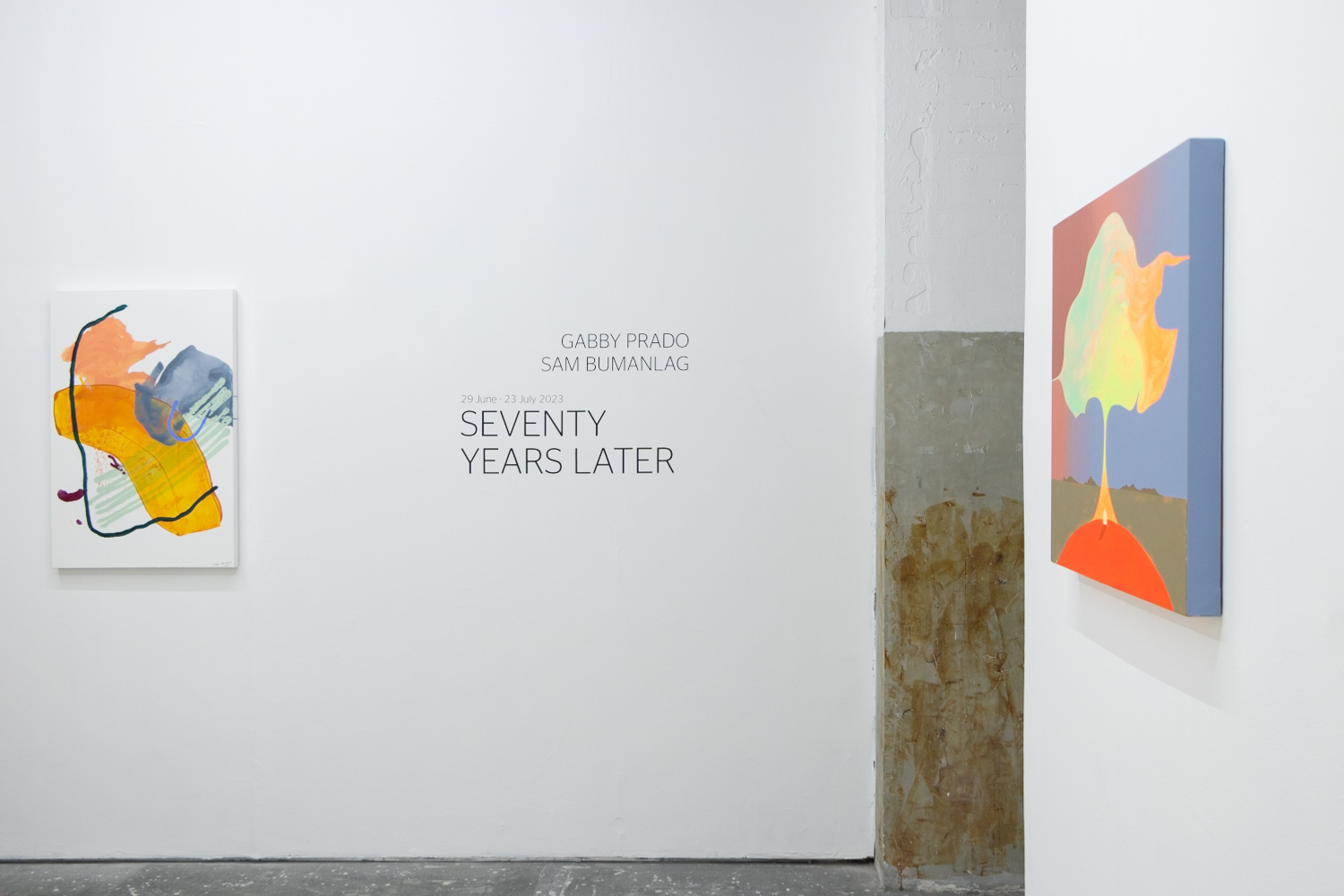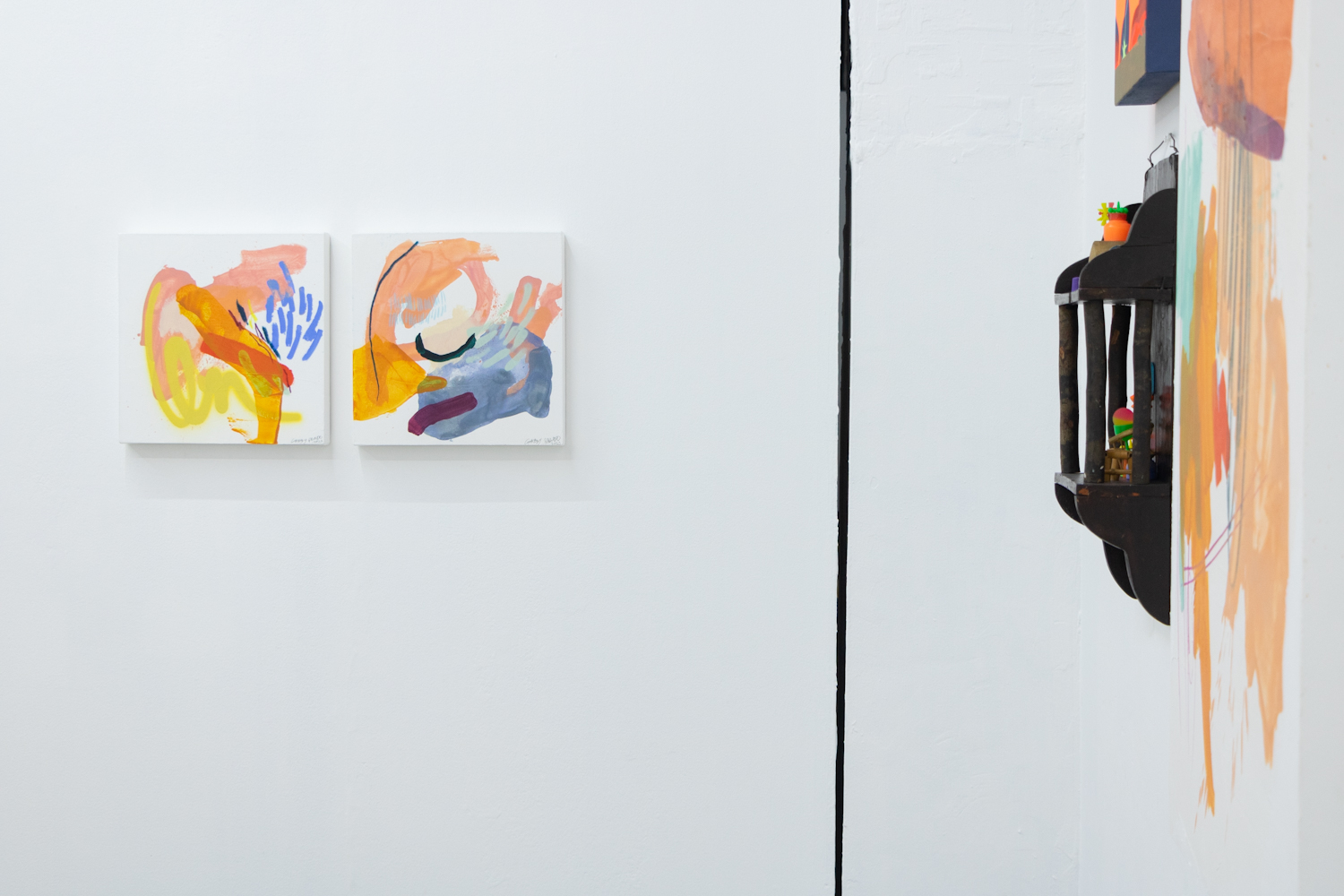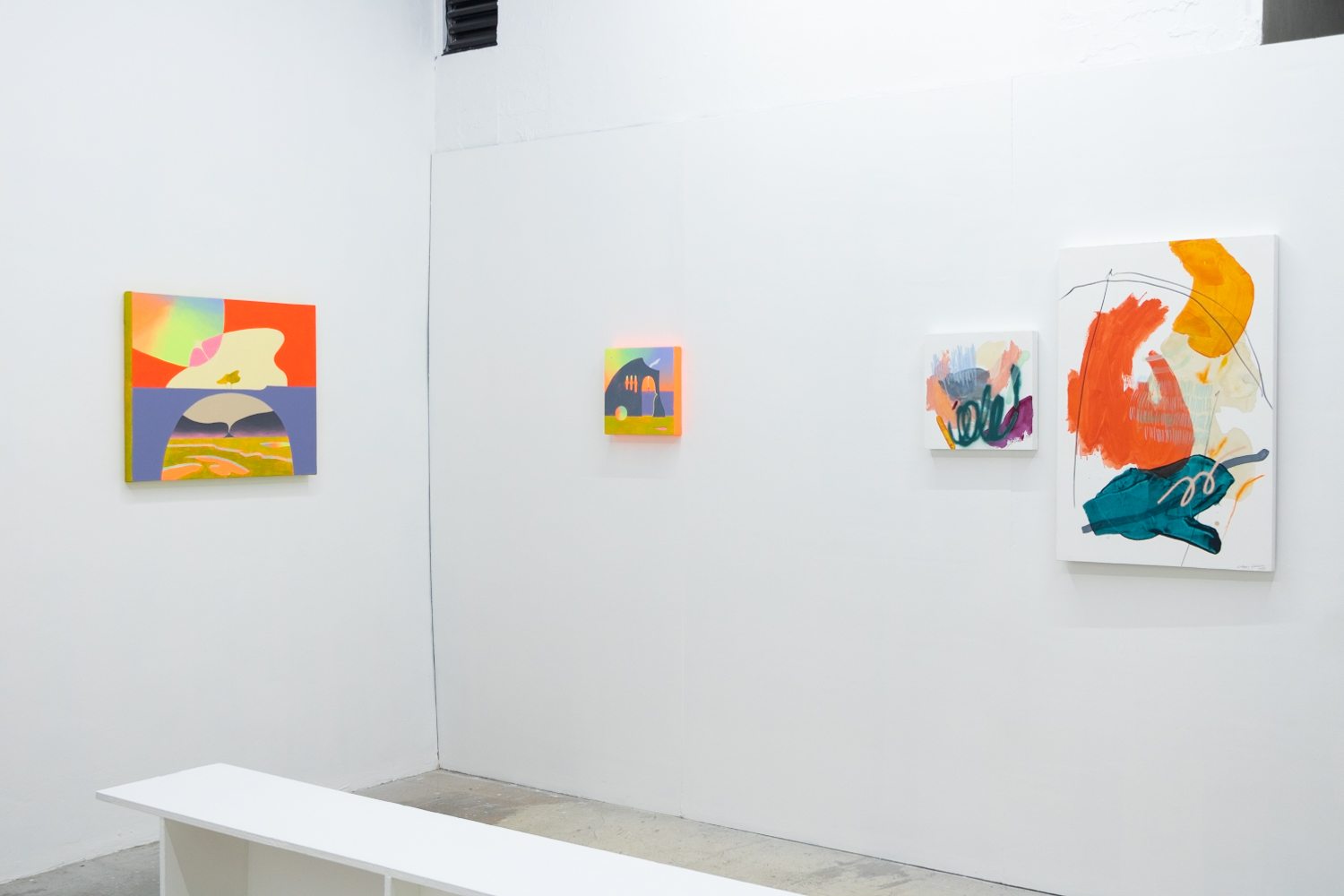We already know that the future doesn’t always play out as cinematically as we would like. Even in our most self-assured moments of denial, we can’t help but have certain expectations and hopes projected onto the future, in our attempt to grasp at some semblance of control over time beyond immediate reach. Sometimes, all we’re granted is a brief glimpse, some blurry footage, and undecipherable patterns—if any at all. What we decide to do with those pieces is where it gets interesting.
In Seventy Years Later, artists Gabby Prado and Sam Bumanlag explore how “humans are intermediaries and creators of destiny as manifested in their intervention to shape and form landscapes”. Through mixed media paintings and assemblages that draw on the artists’ own deep wells of specific experiences and memories, the duo create undulating scenes of an imagined or desired future, illustrated as landscapes.
A delicate dance
Reflecting on the idea that people are “intermediaries and creators of destiny”, the two artists set out in personal acts of terraforming, pulling on threads from both real and surreal instances in their lives that may have greatly influenced them. Referencing art critic Lucy Lippard’s 1998 essay Outside (but Not Necessarily Beyond) The Landscape, the duo’s first collaboration for Mono8 gallery “gathers the exploration of the two artists in looking for specific moments and memories that have proceeded to influence their own perspectives”, as written in the exhibition text by Gwen Bautista and Sayoka Takemura.
In Prado’s paintings, objects weave throughout the scenes like flashes of fond memories and notable experiences from seemingly mundane events in the artist’s immediate surroundings. Prompted by the view of landscapes swiftly passed by, Takemura notes that the artist “captures the glimpses of details often overlooked as loose forms, where lines are painted briskly and intentionally, layer after layer.”
While there’s a strong element of irrepressible playfulness and fluidity in the strokes—possibly owing to Prado’s professional training in dance and performance—there’s also a strong will of persistence that ties the scenes together, like complex steps in a delicate dance. Prado combines the performative act of physical movement and the visceral qualities of the visual arts to capture the fleeting nature of blurry scenery, as if making sense of them as she sees fit.
Object and occurrence
Bumanlag fixes her gazes on the skies and how the weather’s changing moods affect our perception of our internal and external landscapes. The acrylic on canvas and assemblage pieces express the artist’s reflection on our continued homage to the power of weather patterns to transform, engulf, and enhance things—the terrain, human emotions, perception, and life itself—natural processes and different worlds that coexist simultaneously with or without our acknowledgement. The artist creates seams to travel to distant dreams and gossamer-thin memories that leave deep impressions but dissolve faster the tighter we hold on.
As Bautista puts it, Bumanlag builds off of “images and objects from incidents enveloped with reverence and affection”, and “juxtaposes metaphysical elements in her attempt to archive and solidify these tender moments.” Through Bumanlag’s careful selection of objects and occurrences to arrange and assemble, she creates a world of her own likeness and liking.
Expressed differently but springing from shared themes of movement, transcendence and change, Bumanlag and Prado create from the chaos and hold on to their power to have an active hand in shaping destiny. But what does the future look like in the face of Climate Change, Artificial Intelligence, and exponential changes that shake us to our existential core? How much does it deviate from what we can manage to imagine—at least with just our natural set of senses?
Because of the felt, measurable environmental changes brought about by greedy anthropomorphic activity, the human capacity to destroy sometimes overshadows our capacity to create. In the essay by Lippard referenced in the exhibit notes, she argues that “we do not only manipulate ‘nature’ but the culture of the nineteenth-century panoramic survey, which itself seeks to alter the landscape by present depiction and future use.” The answer to conserving the physical world, albeit still oftentimes denied flat out, is more straightforward and imminent. The one to conserve the metaphysical world—the things we thought made us uniquely sentient and human—is not as clear-cut, as we scramble to keep up.
But what if we co-created and co-opted our tools wisely? With our art, books, poetry, dance, and sentiment, hopefully, the future will still have pieces of us in it. The fail-safe in complete and unregulated automation, we’ll be hard to shake off.
Seventy Years Later continues at MONO8 Gallery in San Juan City until July 23.
Nikki Ignacio is a writer and communicator who works mainly in public relations, media, science, art, and the development sector.
Images courtesy of MONO8 Gallery.



